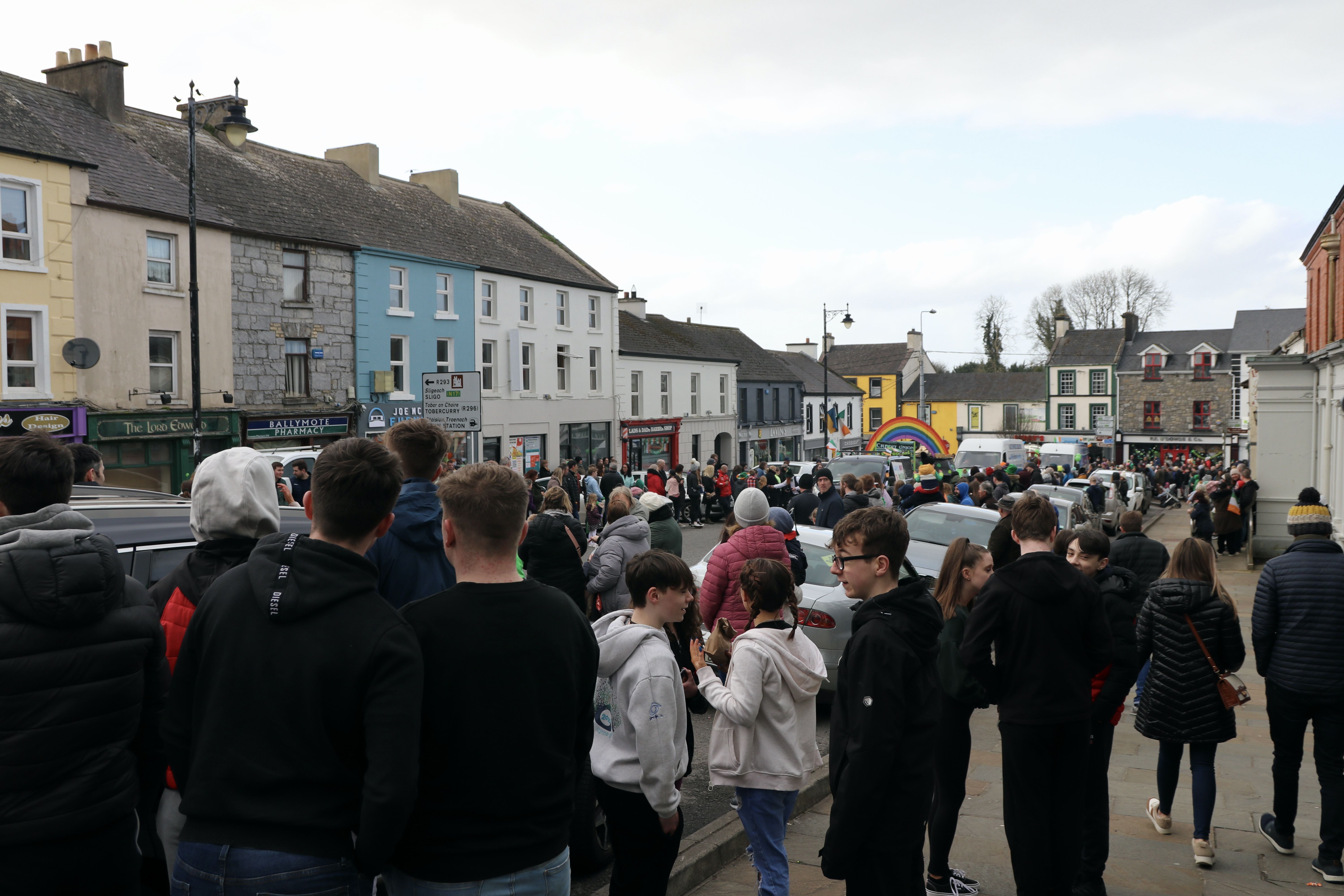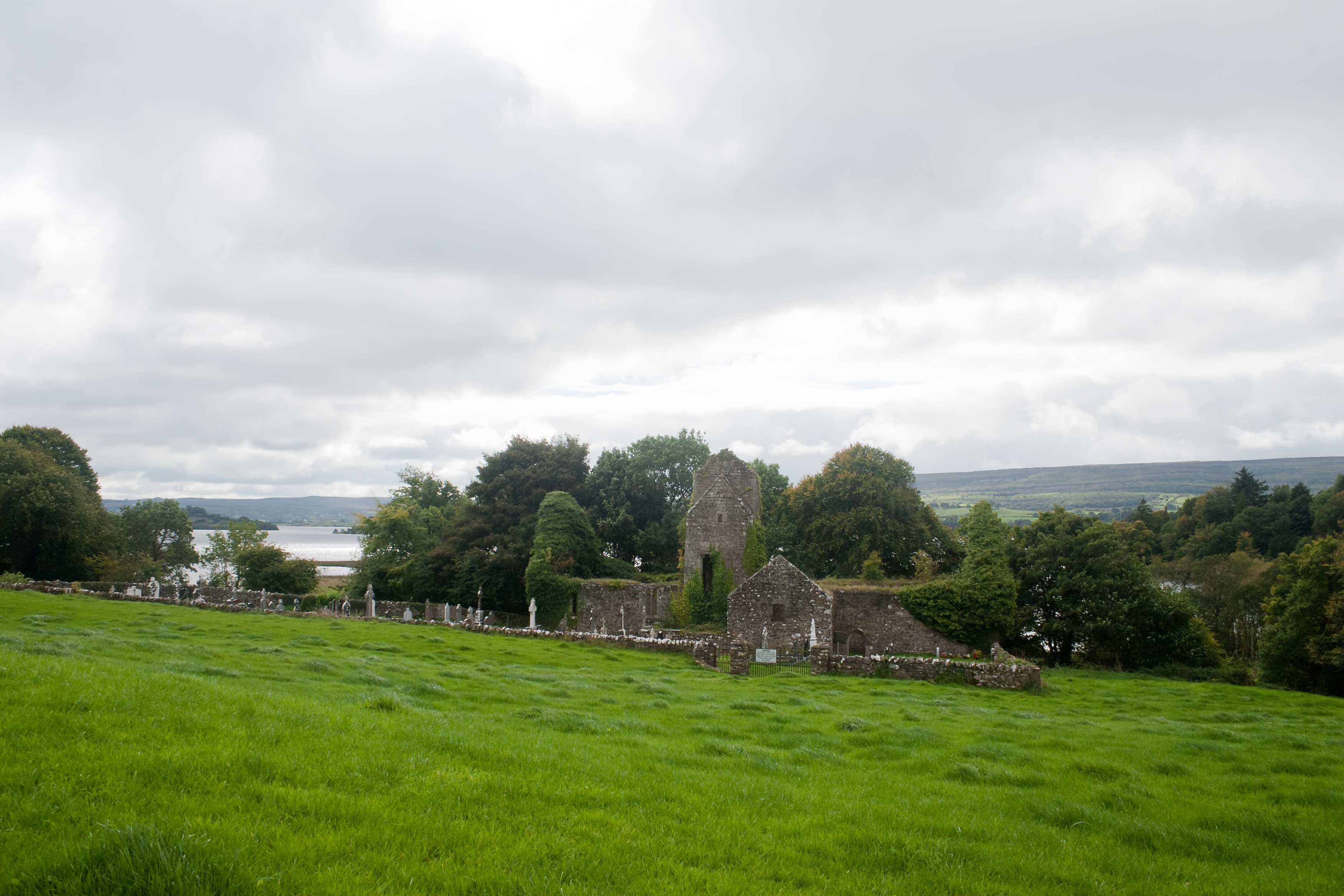|
Tir Ollíol
Tir Ollíol was a túath in northwest Ireland. It was part of the confederation of Iochtar Connacht until the late 16th century. Its name is preserved by the barony of Tirerril in southeast County Sligo. It is named after Olliol, one of the sons of Eochaid Mugmedon and half brother of Niall of the Nine Hostages, from whom descended the Uí Ailello, a branch of the early Irish dynasty known as the Connachta. History The Uí Aillelo dynasty sank into obscurity at an early date. but the name is preserved as the tuath of Tir Ollíol (Tirerril). The Lords of Tir Olioll were Mac Donnchadha of the Uí Briúin Aí a branch of the Mac Díarmada of Moylurg (Magh Luirg). The Mac Donagh (Mac Donnchadha) surname originates from Donnchadh, son of Tomaltach na cairge (of the rock) ua Mac Diarmata, who was King of Moylurg 1197-1207. They later split into two groups, one based in Collooney and Ballindoon (Tirerril), and the other in Ballymote (Corran Corran may refer to: Given name *Corran A ... [...More Info...] [...Related Items...] OR: [Wikipedia] [Google] [Baidu] |
Túath
''Túath'' (plural ''túatha'') is the Old Irish term for the basic political and jurisdictional unit of Gaelic Ireland. ''Túath'' can refer to both a geographical territory as well the people who lived in that territory. Social structure In ancient Irish terms, a household was reckoned at about 30 people per dwelling. A ''trícha cét'' ("thirty hundreds"), was an area comprising 100 dwellings or, roughly, 3,000 people. A ''túath'' consisted of a number of allied ''trícha céta'', and therefore referred to no fewer than 6,000 people. Probably a more accurate number for a ''túath'' would be no fewer than 9,000 people. Each ''túath'' was a self-contained unit, with its own executive, assembly, courts system and defence force. ''Túatha'' were grouped together into confederations for mutual defence. There was a hierarchy of ''túatha'' statuses, depending on geographical position and connection to the ruling dynasties of the region. The organisation of ''túatha'' is covered ... [...More Info...] [...Related Items...] OR: [Wikipedia] [Google] [Baidu] |
Tawnagh
Tawnagh () is a townland in the civil parish of Templeport, County Cavan, Ireland. It lies in the Roman Catholic parish of Corlough and barony of Tullyhaw. Geography Tawnagh is bounded on the west by Derrynacreeve, Derryvahan and Scrabby, Corlough townlands and on the east by Gortullaghan, Prospect, Corlough and Mullaghlea townlands. Its chief geographical features are small streams, spring wells and dug wells. Tawnagh is traversed by the L5028 public road and rural lanes. The townland covers 150 statute acres. History In medieval times the McGovern barony of Tullyhaw was divided into economic taxation areas called ballibetoes, from the Irish ''Baile Biataigh'' (Anglicized as 'Ballybetagh'), meaning 'A Provisioner's Town or Settlement'. The original purpose was to enable the farmer, who controlled the baile, to provide hospitality for those who needed it, such as poor people and travellers. The ballybetagh was further divided into townlands farmed by individual families who ... [...More Info...] [...Related Items...] OR: [Wikipedia] [Google] [Baidu] |
Corann
Corann was an ancient Irish túath in northwest Connacht represented now by the present barony of Corran in County Sligo. The name is derived in legend from Corann, the harper of Dian Cecht of the Tuatha Dé Danann. Organisation Ballymote became the centre of the túath after construction of Ballymote Castle in the 13th century. History The well of Corann that alternated between sweet water and salt in time with the ebb and flow of the tide. It was first shired as part of the new County Sligo by the English Lord Deputy Sir Henry Sidney in 1564. References Medieval Ireland Historic Gaelic Territories {{Sligo-geo-stub ... [...More Info...] [...Related Items...] OR: [Wikipedia] [Google] [Baidu] |
Ballymote
Ballymote () is a market town in southern County Sligo, approx. 24 km south east of Sligo town in the province of Connacht, which is located in the north-west of Ireland. Ballymote lies in the barony of Corran. A commuter town with a strong history of independent enterprises along with firm local health, school, and transport services. It is located on the main Dublin to Sligo Train Line, and situated 10 minutes from the N4 / N17 Roadways. Ballymote serves a large hinterland area in south east County Sligo. The Norman Ballymote Castle dates from the 1300s, and the Book of Ballymote was written in or near the town in the 1390s. History The origins of the settlement appear to have been derived from the 12th century Norman Castle, though evidence of earlier settlement and farming in area from 1000BC exists through the presence of ringforts, cairns, and archaeological remains. Ballymote was much affected by the disruption of the full conquest of Ireland by the English an ... [...More Info...] [...Related Items...] OR: [Wikipedia] [Google] [Baidu] |
Ballindoon
Ballindoon () Friary was a Dominican priory beside Lough Arrow in County Sligo, Ireland. It was dedicated to St. Mary and founded in 1507 by Thomas O'Farrell. It was dissolved and is now in ruins. See also * List of abbeys and priories in Ireland (County Sligo) References Dominican monasteries in Ireland Buildings and structures in County Sligo Ruins in Ireland Ruins () are the remains of a civilization's architecture. The term refers to formerly intact structures that have fallen into a state of partial or total disrepair over time due to a variety of factors, such as lack of maintenance, deliberate ... 1507 establishments in Ireland 1580s disestablishments in Ireland Religious organizations established in the 1500s Religion in County Sligo Christian monasteries established in the 16th century {{Christian-monastery-stub ... [...More Info...] [...Related Items...] OR: [Wikipedia] [Google] [Baidu] |
Collooney
Collooney or Coloony () is a town in County Sligo, Ireland. Toponymy Collooney is thought to derive from . Reverend Terrence O'Rorke has previously also suggested ''Culmaine'', as Collooney is designated this way in such works as ''the annals of the Four Masters'', ''Dudley M'Firlis'', and O'Flaherty's "Chrorographical description of West Connaught";he further suggests "Angle of the Whirlpool" from the confluence of the ''Uncion'' and ''Owenmore'' as the most likely origin of the name. The settlement was also at times previously termed ''Cashel'', KillinBridge'' or even ''Cowlowney''. History During the Irish Rebellion of 1798, a battle took place outside the town in which a combined French and Irish force defeated British troops from the Sligo garrison. Known as the Battle of Collooney (or Battle of Carricknagat), this conflict is commemorated by the Teeling Monument outside the town - named for a member of the United Irishmen who was involved in the battle. In the 18th c ... [...More Info...] [...Related Items...] OR: [Wikipedia] [Google] [Baidu] |
Magh Luirg
{{Use dmy dates, date=April 2022 Magh Luirg or Magh Luirg an Dagda, Anglicised as Moylurg, was the name of a medieval Irish kingdom located in modern-day County Roscommon, Ireland. It was a sub-kingdom of the kingdom of Connacht from c. 956–1585. The kings of Moylurg were a branch of the Síl Muiredaig, who were themselves of the Uí Briúin Ai who descended from the Connachta. Moylurg is, in Irish, ''Magh Luirg an Dagda'', "the plain of the tracks of the Dagda". The Dagda was an ancient Irish deity. The kingdom's first king, Maelruanaidh Mor mac Tadg, was a son of Tadg mac Cathal (King of Connacht 925–956) and brother to Conchobar mac Tadg, who succeeded as king in 967. Maelruanaidh is said to have made a deal of some nature where, in return for abandoning any claim to the provincial kingship, he would be given Moylurg. His dynasty were known as the Clan Mulrooney (later known as Clan MacDermot), cousins to O'Connor, who was then High King of Ireland. This royal connection w ... [...More Info...] [...Related Items...] OR: [Wikipedia] [Google] [Baidu] |
Moylurg
{{Use dmy dates, date=April 2022 Magh Luirg or Magh Luirg an Dagda, Anglicised as Moylurg, was the name of a medieval Irish kingdom located in modern-day County Roscommon, Ireland. It was a sub-kingdom of the kingdom of Connacht from c. 956–1585. The kings of Moylurg were a branch of the Síl Muiredaig, who were themselves of the Uí Briúin Ai who descended from the Connachta. Moylurg is, in Irish, ''Magh Luirg an Dagda'', "the plain of the tracks of the Dagda". The Dagda was an ancient Irish deity. The kingdom's first king, Maelruanaidh Mor mac Tadg, was a son of Tadg mac Cathal (King of Connacht 925–956) and brother to Conchobar mac Tadg, who succeeded as king in 967. Maelruanaidh is said to have made a deal of some nature where, in return for abandoning any claim to the provincial kingship, he would be given Moylurg. His dynasty were known as the Clan Mulrooney (later known as Clan MacDermot), cousins to O'Connor, who was then High King of Ireland. This royal connection w ... [...More Info...] [...Related Items...] OR: [Wikipedia] [Google] [Baidu] |
Uí Briúin
The Uí Briúin were a royal dynasty of Connacht. Their eponymous apical ancestor was Brión, son of Eochaid Mugmedon and Mongfind, and an elder half brother of Niall of the Nine Hostages. They formed part of the Connachta, along with the Uí Fiachrach and Uí Ailello, putative descendants of Eochaid Mugmedon's sons Fiachra and Ailill. The Uí Ailello were later replaced as the third of the Three Connachta, through genealogical sleight of hand, by the Uí Maine. Connacht was ruled in early times by the Uí Fiachrach, the Uí Briúin only becoming the dominant force in Connacht in the 7th and 8th centuries. The Uí Briúin divided into multiple septs, the three major ones being: * The Uí Briúin Aí, named for the region they controlled—Mag nAí, the lands around the ancient centre of Connacht, Cruachan in modern County Roscommon. The most notable sept of the Uí Briúin Ai was the Síol Muireadaigh, from whom the ruling families of Ó Conchubhair (O'Connor) and ... [...More Info...] [...Related Items...] OR: [Wikipedia] [Google] [Baidu] |
Connachta
The Connachta are a group of medieval Irish dynasties who claimed descent from the legendary High King Conn Cétchathach (Conn of the Hundred Battles). The modern western province of Connacht (Irish ''Cúige Chonnacht'', province, literally "fifth", of the Connachta) takes its name from them, although the territories of the Connachta also included at various times parts of southern and western Ulster and northern Leinster. Their traditional capital was Cruachan (modern Rathcroghan, County Roscommon). Origins The use of the word ''cúige'', earlier ''cóiced'', literally "fifth", to denote a province indicates the existence of a pentarchy in prehistory, whose members are believed to have been population groups the Connachta, the Ulaid (Ulster) and the Laigin (Leinster), the region of Mumu (Munster), and the central kingdom of Mide. This pentarchy appears to have been broken up by the dawn of history in the early 5th century with the reduction of the Ulaid and the founding of ... [...More Info...] [...Related Items...] OR: [Wikipedia] [Google] [Baidu] |



